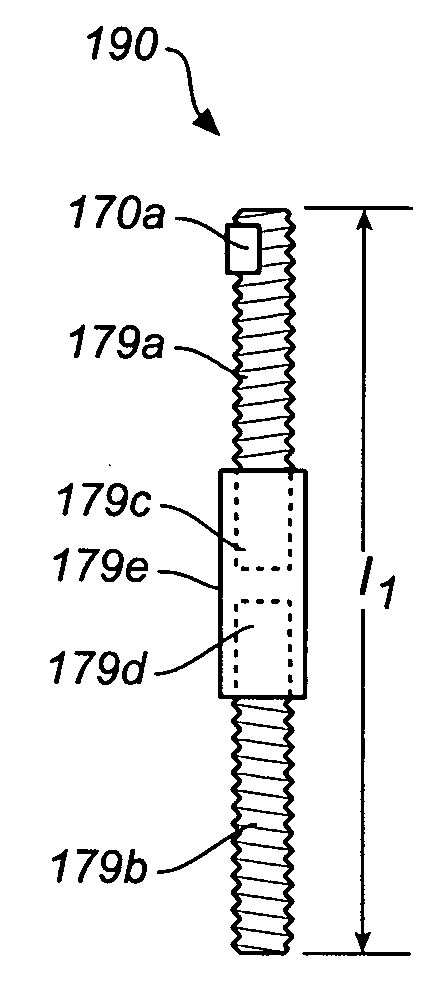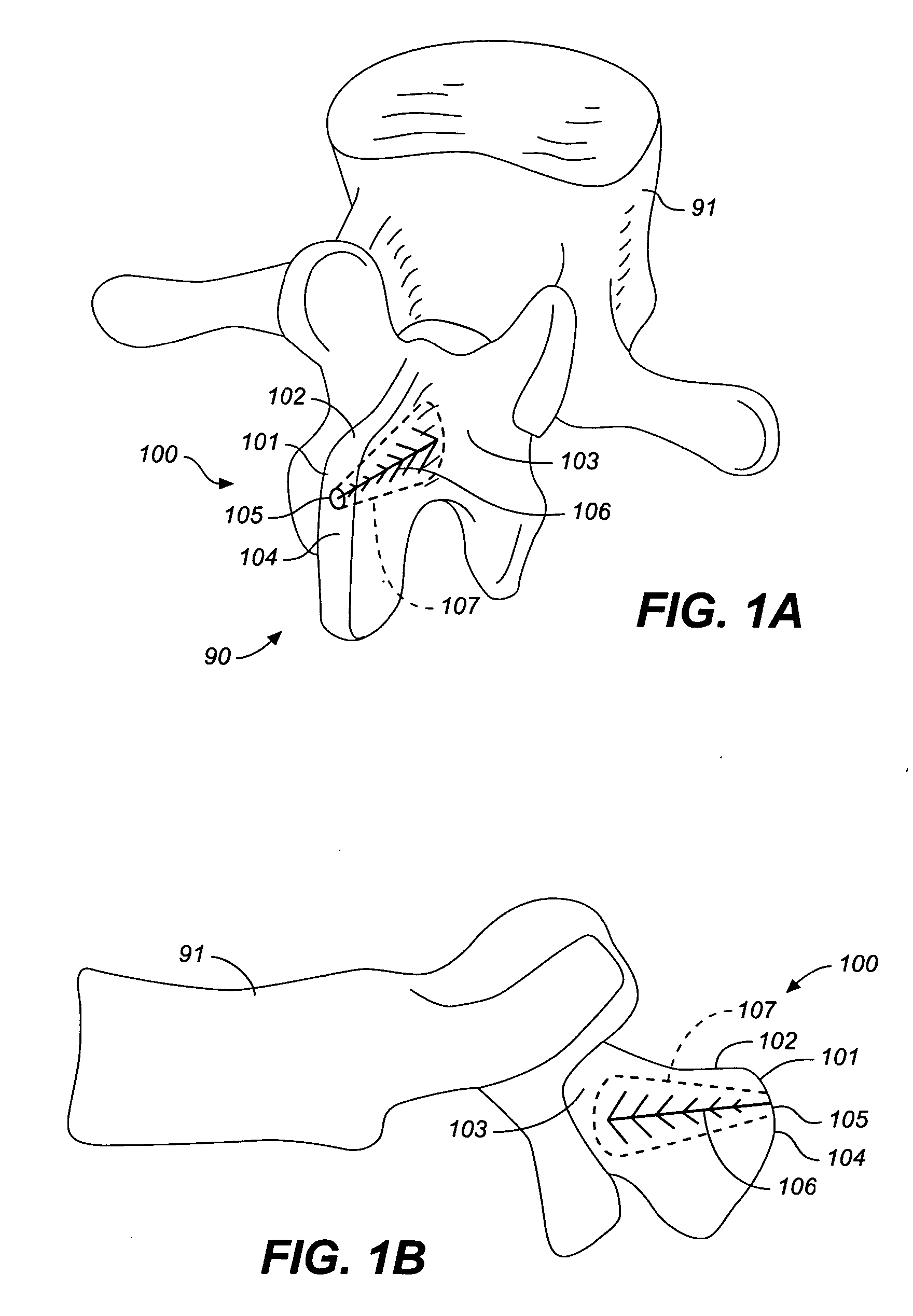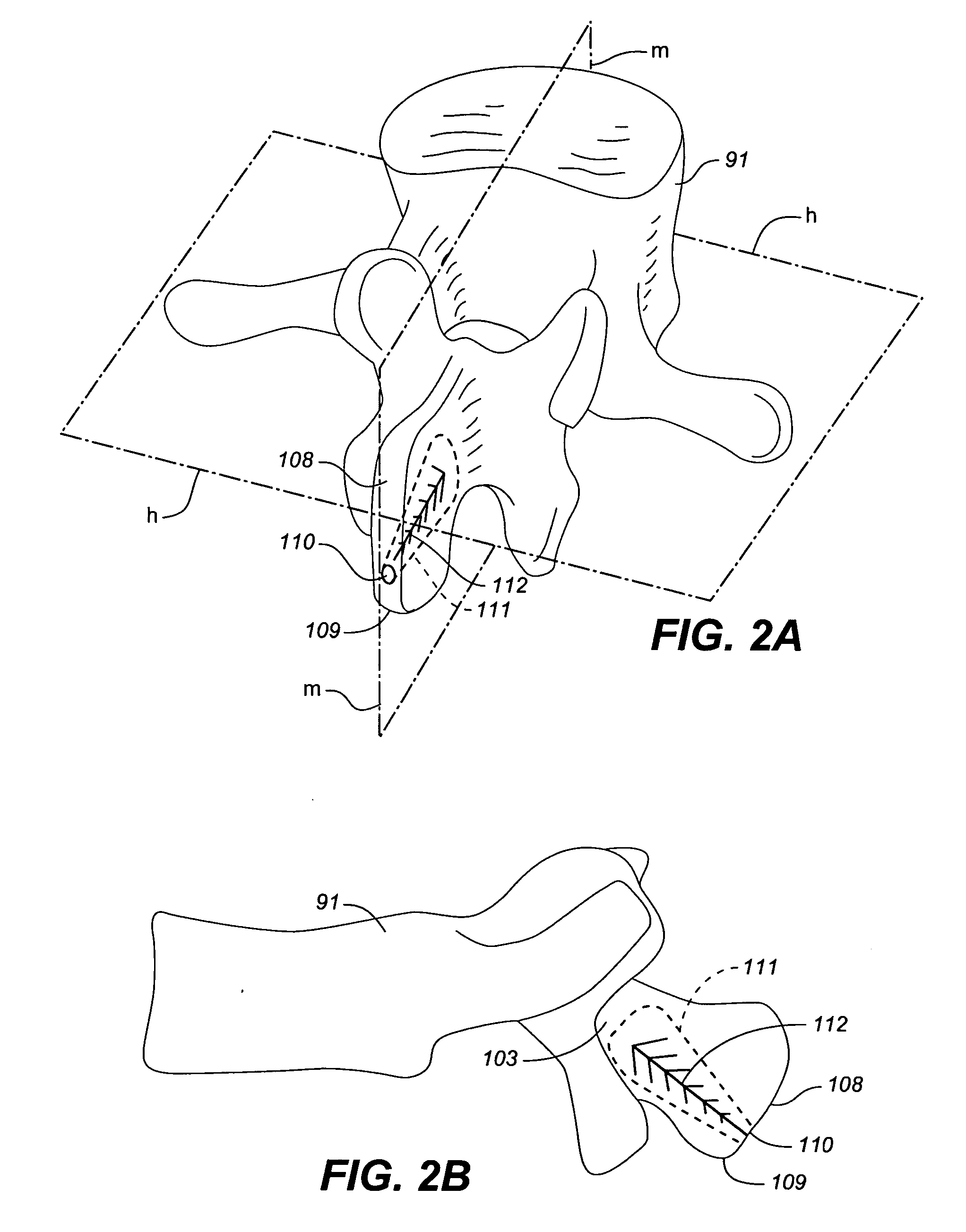Spine treatment devices and methods
a technology for treating devices and spines, applied in the field of spine treatment devices and methods, can solve problems such as degeneration of discs, pain or other manifestations, and inability to fully recover, and achieve the effects of reducing pain and or deformity, and reducing the damage or disruption of surrounding tissu
- Summary
- Abstract
- Description
- Claims
- Application Information
AI Technical Summary
Benefits of technology
Problems solved by technology
Method used
Image
Examples
Embodiment Construction
[0064]FIGS. 1A and 1B illustrate a reinforced posterior arch 100 of a first vertebra 91 of a spine 90, including a spinous process 101 and lamina 103. The first vertebra 100 of the spine 90 as illustrated includes a first spinous process 101 with a superior portion 102 having a posterior ridge 104 into which a hole 105 is drilled. The hole 105 may be drilled with a drill, a trocar, a large bore IV needle or similar sharp object through the external and relatively hard cortical bone, to reach the internal cancellous bone within the spinous process 101 and adjacent the lamina 103.
[0065] Once the cancellous bone is accessed, optionally, a tool such as a balloon tamp, or other expandable member or small crushing or drilling member is used to create a cavity 107 or cavities within the cancellous bone by compressing, crushing or drilling out the bone material. X-rays may be used to determine how far to drill into the bone. The cavity 107 may be in the spinous process, through to the base...
PUM
 Login to View More
Login to View More Abstract
Description
Claims
Application Information
 Login to View More
Login to View More - R&D
- Intellectual Property
- Life Sciences
- Materials
- Tech Scout
- Unparalleled Data Quality
- Higher Quality Content
- 60% Fewer Hallucinations
Browse by: Latest US Patents, China's latest patents, Technical Efficacy Thesaurus, Application Domain, Technology Topic, Popular Technical Reports.
© 2025 PatSnap. All rights reserved.Legal|Privacy policy|Modern Slavery Act Transparency Statement|Sitemap|About US| Contact US: help@patsnap.com



